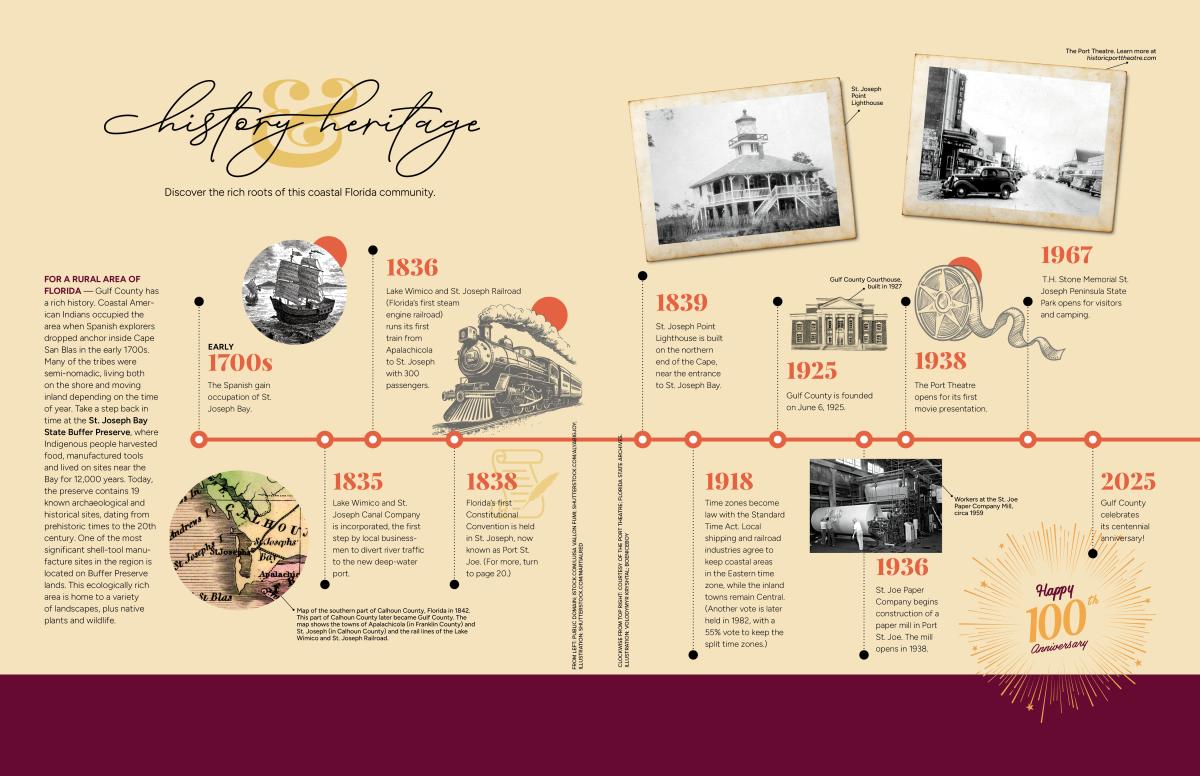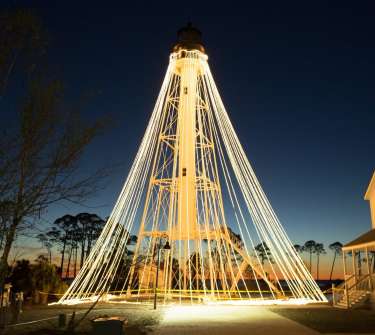History
Once a bustling seaport, it was here that delegates from all counties in Territorial Florida assembled, in 1838, to draft Florida’s first State Constitution.
Coastal American Indians occupied our area when Spanish explorers dropped anchor inside Cape San Blas in the early 1700s. In 1822, settlers, realizing the potential of the Apalachicola River as a commercial outlet for the rich cotton-producing states, founded the town of Apalachicola. St. Joseph’s (the original name of Port St. Joe) was established shortly thereafter, in 1835, because its harbor was deeper at 17 feet. A railway from Depot Creek to St. Joseph’s Bay was opened in 1836 the first utilizing steam locomotion in Florida and one of the first three steam railroads in the United States.
By 1837, St. Joseph was flourishing as the largest city in the Territory of Florida, with a population estimated near 11,000. And, it was here that 56 delegates gathered to draw up the constitution for Florida to become a state. Port St. Joe is still called the “Constitution City.”
Soon after, a line of catastrophic events including; yellow fever, a great fire, a major hurricane, and the demise of the railroad reduced the town to only a few hunters, trappers, and fishermen. Re-established in 1909, the resurrected city went industrial with the opening of the paper mill in 1938. The mill closed in 1999 and the area, once again, transformed itself this time into a tourist-friendly destination.
Hurricane Michael in 2018 had a large impact on the area but the community spirit remained strong and contributed to a successful recovery.


